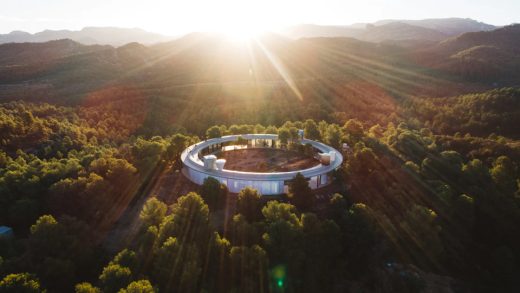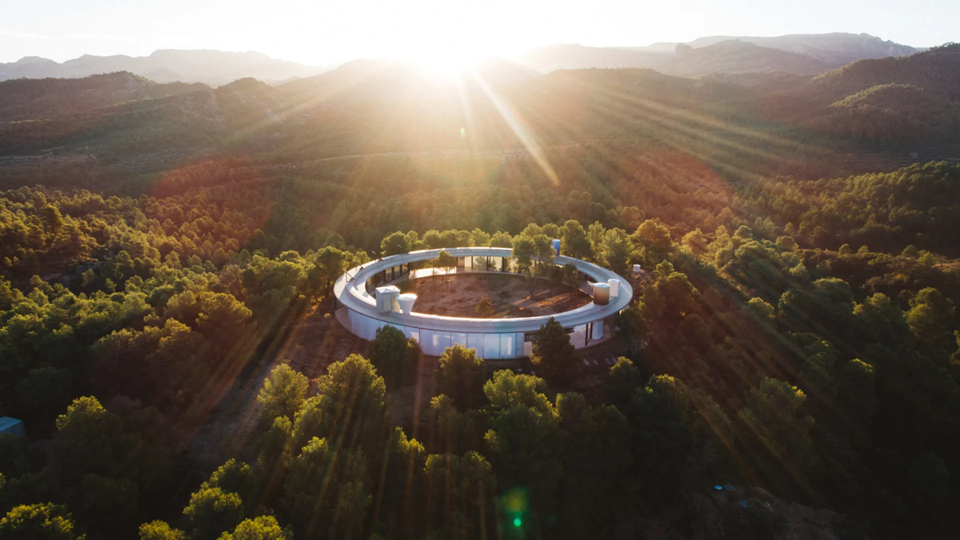These jaw-dropping houses are pieces of art—and you can rent them
August 08, 2024
These jaw-dropping houses are pieces of art—and you can rent them
Solo Houses, a stunning and ambitious architectural project, is taking shape in the Spanish countryside.
BY Jesus Diaz
Christian Bourdais and Eva Albarrán are building what may be the most interesting architectural project on the planet: a collection of 16 extraordinary buildings sprawling more than 425 acres in the stunning sierras of Teruel, near the town of Matarraña, Spain. Think about it as an art collection in which the artwork is full-scale, fully-functional homes designed by some of the most interesting architects of this generation, with no creative constraints whatsoever. The name of this architectural wonderland is Solo Houses.
The Solo Houses are defined by their unconventional architecture. Their surreal forms—a ring of glass and concrete or an inverted pyramid, for example—are nestled into idyllic and isolated terrain. There has never been a “museum” of architecture like this. It’s a project that, according to its founders, has been conceived with the highest of visions: to redefine contemporary architecture. “In 40 years, this collection will have historical value because it brings together the best architects of our time under unique conditions,” Bourdais tells me in a phone interview.
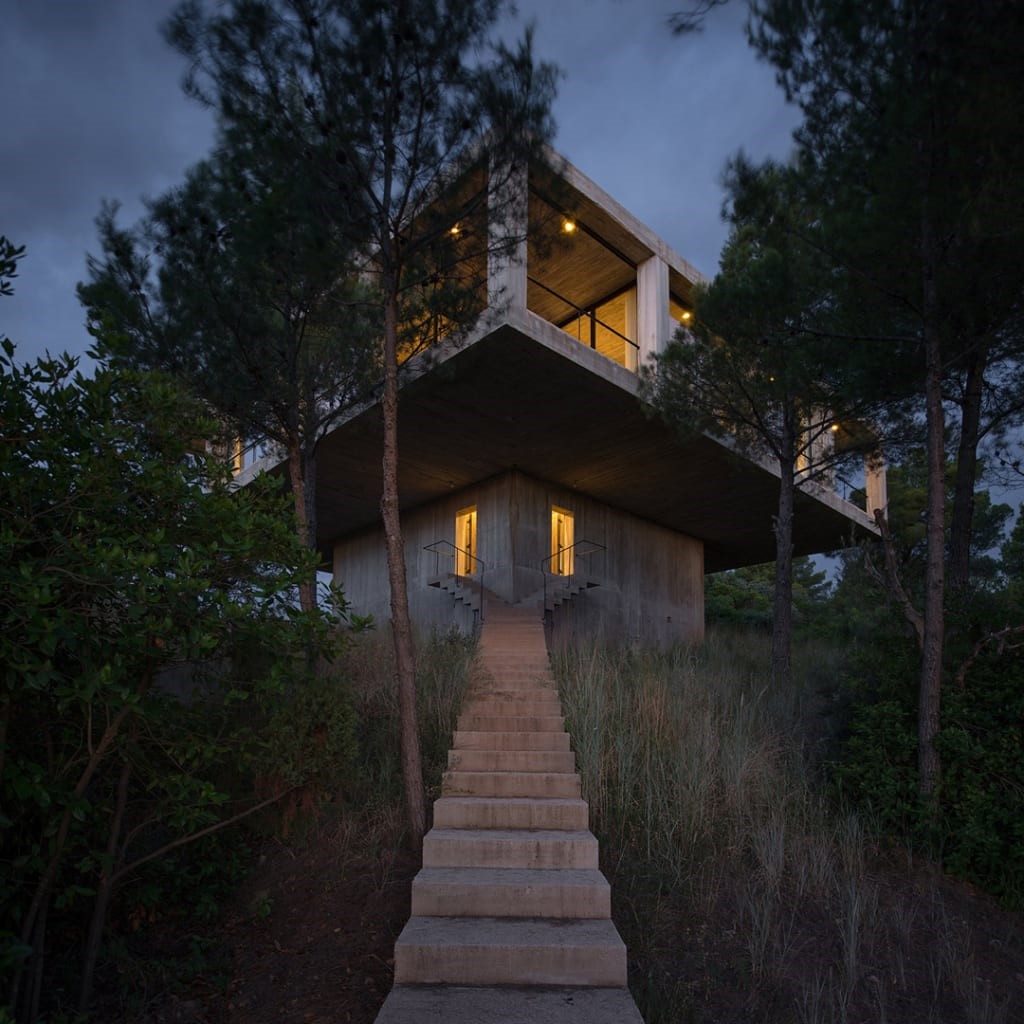
Architectural innovation
Bourdais tells me that he was inspired by his experience working at the couple’s Paris gallery, Albarrán Bourdais, which specializes in public art installations and has a reputation for supporting ambitious and innovative projects. The couple loves architecture, but Bourdais believes that modern works are too constrained by commercial interests.
In his view, it’s rare to find a vision that isn’t tainted by the demands of clients. He conceived the idea for Solo Houses to free architects from those limitations. “Being surrounded by artists for many years led to the idea of giving architects the same creative freedom that artists have,” Bourdais explains. The approach shifts the traditional power dynamics in architecture, placing architects at the center of the creative process rather than the developers.
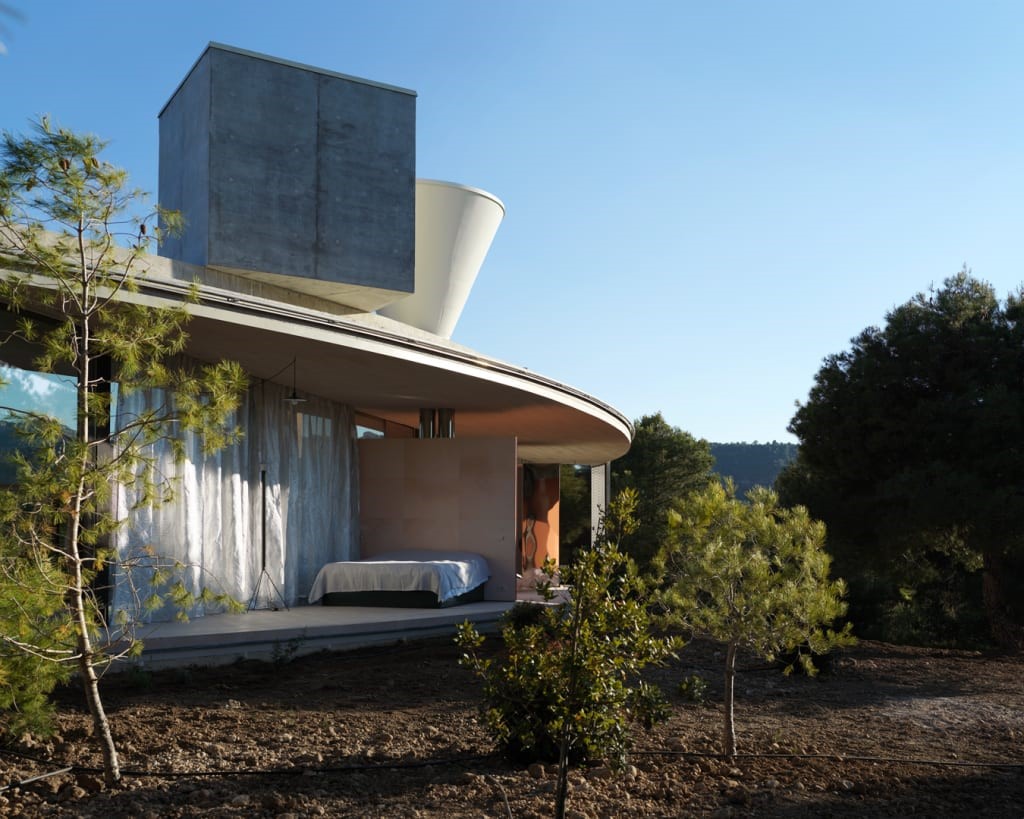
The concept of Solo Houses is straightforward. Select some of the best architects of our generation—not Pritzker winners, but the (potential) future Pritzker winners—and provide them with a designated plot of land in a breathtaking natural landscape full of trees and interesting topology. The brief tasks them to design without any restrictions aside from the building code of Teruel, a region in the east of Spain. “We wanted to give them carte blanche and see what happens,” Bourdais elaborates.
The idea is not totally without precedent. Back in 1945, John Entenza—editor of Arts & Architecture magazine—launched the Case Study House project. The initiative invited top architects to design and build modern, affordable homes for the booming post-war middle class. Entenza tapped people Charles and Ray Eames, Richard Neutra, Pierre Koenig, and John Lautner, who created prototypes across southern California that experimented with new materials and construction techniques. Today, the houses are recognized as some of the most iconic American architecture.
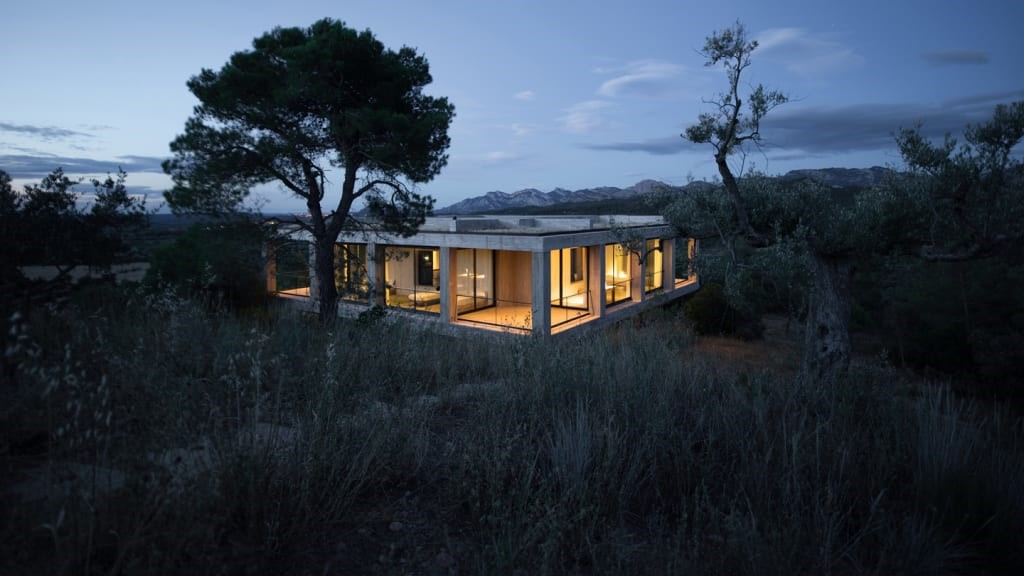
Making a wonderland
Finding the right location for Solo Houses was crucial. Bourdais traveled extensively across Europe to identify a suitable site. “It needed to be an incredible place where you can build with the right freedom,” he says. The sierras of Matarraña offer not only natural beauty, but also practical considerations for design and construction, from the unique terrain, full of smooth hills and Mediterranean forest, to a great climate. The area also had the right building code to allow for some extraordinary buildings. The site is relatively close to an international airport, which was a crucial factor for the commercial success of the project. He tells me that nowhere in Europe you can find this unique combination of factors. So, in the mid-2010s, Albarrán and Bourdais acquired 425 acres of land with the dream of creating their architectural collection.
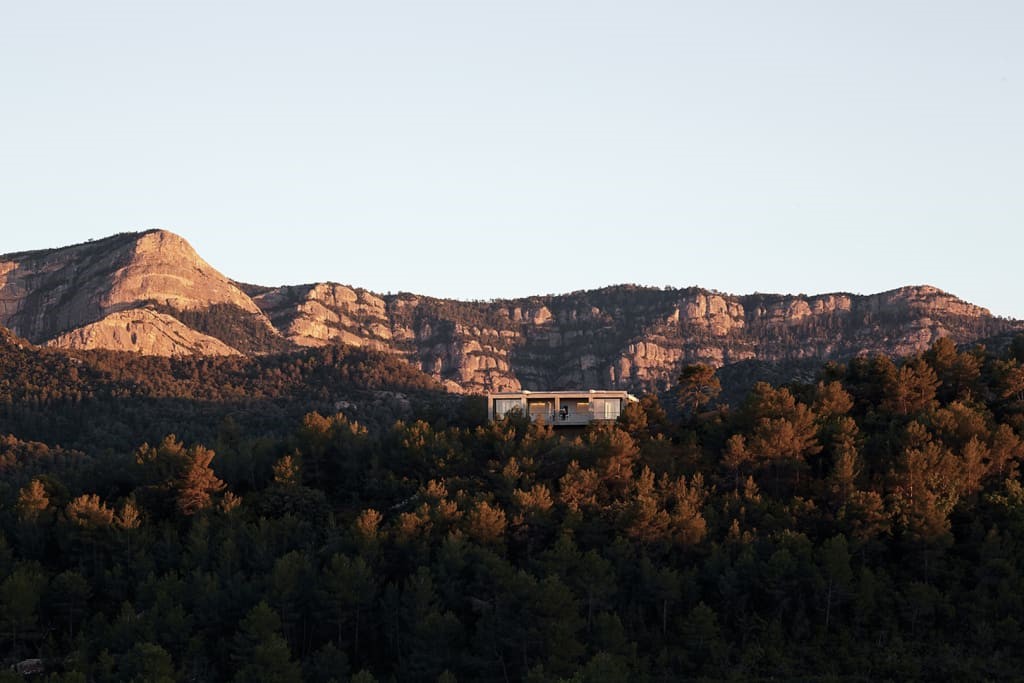
Then they made the selection of architects. invited young, talented architects like Go Hasegawa, KGDVS, Pezo von Ellrichshausen, Tatiana Bilbao, and Smiljan Radic, many of whom have since gained significant recognition in their field. “These architects have a lot of talent. When we contacted them a few years ago, they might not have had the recognition they have now, but that’s something we like,” Bourdais says.
Each architect chosen for Solo Houses is then matched with a specific plot within the site based on their unique design philosophy. Bourdais takes care to ensure that the homes are not just artistic statements, but also functional living spaces. They are not gigantic, impractical sculptures. “The houses must be real houses, not just objects,” he emphasizes. This focus on functionality ensures that the homes are suitable for everyday use while still pushing the boundaries of architectural design.
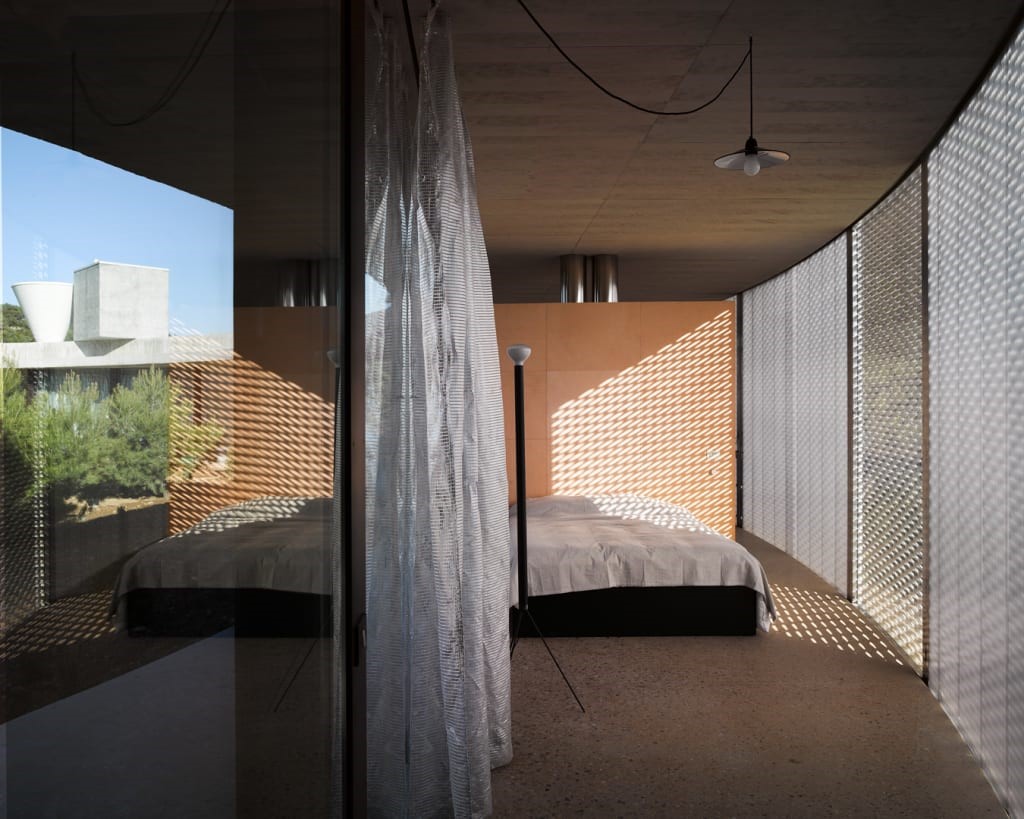
Extraordinary works
A concrete rectangular structure that towers over the trees was the first home, built in 2015. The circular house by KGDVS, a studio led by Kersten Geers and David Van Severen, was built in 2017. The house is characterized by its transparent walls and a circular roof with a 147-feet diameter that blends into the surrounding landscape. It includes a central pool and is often used as a set for commercials due to its striking aesthetic.
Another remarkable design, yet to be built, is the inverted concrete pyramid by Chilean architect Pezo von Ellrichshausen. This structure, which floats above a pool that is also an inverted pyramid, is so striking that it feels transported from another planet. It offers a unique living experience with expansive retractable windows that open the interior to the surrounding nature.
One of the most interesting projects is not a house but a modular hotel designed by Smiljan Radic. The cylindrical glass units offer guests privacy and panoramic views of the natural environment. The modules are connected by a circular cement canopy that serves as both a corridor and a unifying architectural element.
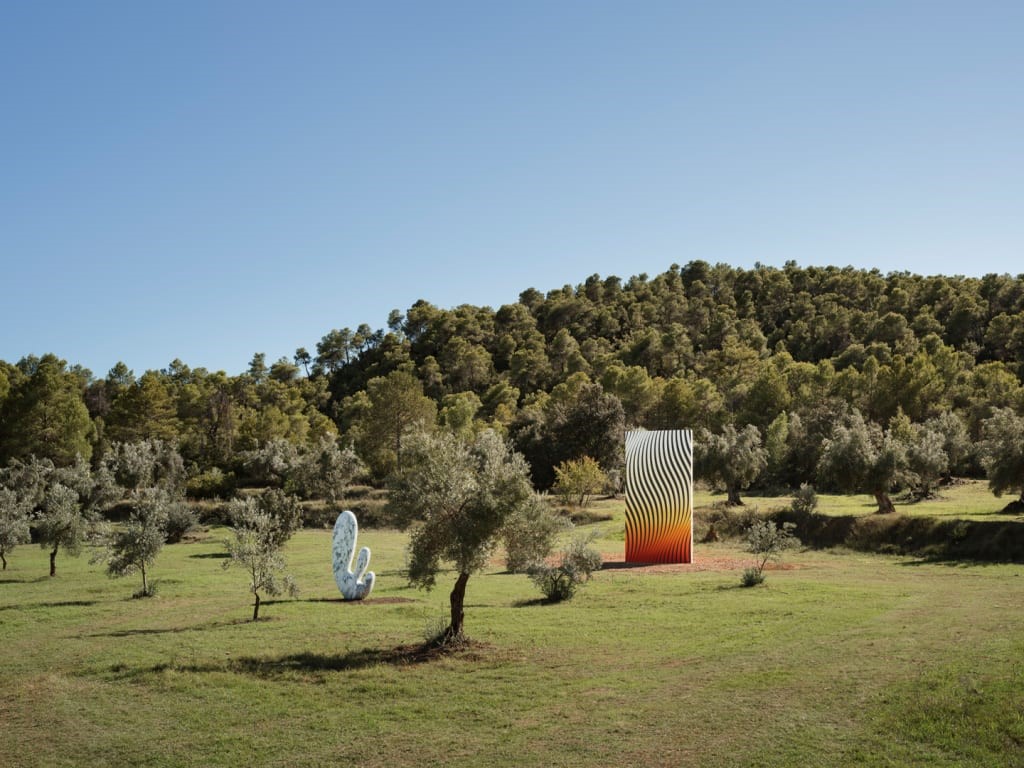
In addition to building houses, Solo Houses hosts a sculpture biennial called the Solo Summer Group. This outdoor exhibition features works by artists represented by the Albarrán-Bourdais gallery and is integrated into the natural environment of Matarraña. All those works, which people will be able to visit freely, are for sale. In fact, this entire 425-acre architectural wonderland acts as a gigantic extension to their galleries in Paris, Madrid, and Menorca.
The cherry on top of the project is an old local building that has been restored and turned into a winery called Venta d’Aubert, which was incorporated into the project in 2022, which makes a line of wines with minimal human intervention and organic processes. People who visit the winery are free to roam the Solo Homes project and enjoy both the architectural pieces and the sculptures on the ground.
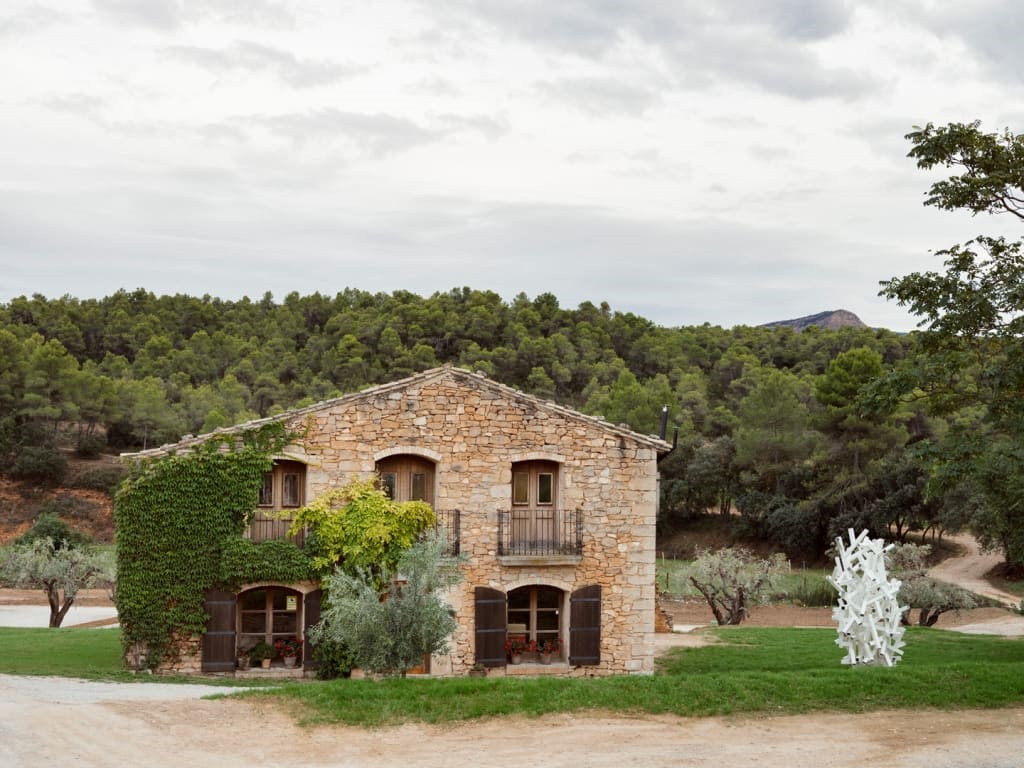
Strong economic model and ethics
Solo Homes is self-financed. Its economic model revolves around renting the homes to brands and individuals who appreciate innovative architecture. High-profile clients, including luxury brands like Louis Vuitton and Salvatore Ferragamo, have used the houses for exclusive events. “It’s very strong because these houses are highly desirable for high-end brands,” Bourdais says.
The houses are available for rent, allowing architecture enthusiasts to experience living in these unique structures. While Bourdais hasn’t disclosed prices, he believes that it democratizes access to high-quality architectural design, contrasting with typical luxury architectural projects that cater exclusively to wealthy clients.
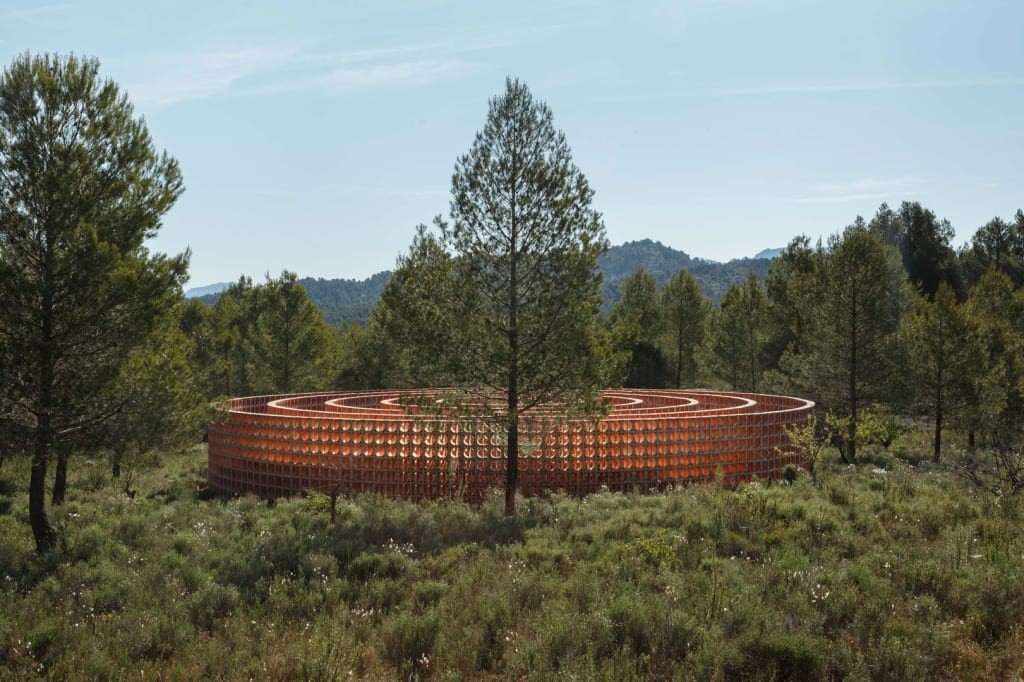
Canal also told me of the project’s broader cultural benefits, noting Albarrán and Bourdais’s commitment to the artistic ecosystem. “They develop all their projects with humility and a focus on benefiting the artistic ecosystem beyond their own interests,” Canal observed. A dedication that is surprising in this hypercapitalistic world, one that expands cultural dialogue while maintaining a strong ethical foundation, he points out.
The project has just begun and there’s still a lot to be done. It may take two or three more decades before everything is finished, so it’s hard to gauge the historical impact in the long term. The idea of “curating” architects and providing them with the freedom to create without constraints is an attractive proposition, to say the least, one that is not just about building homes but about fostering a new approach to architectural design, where creativity and functionality coexist, and where the built environment is seen as an integral part of our common cultural heritage.
ABOUT THE AUTHOR
(16)

